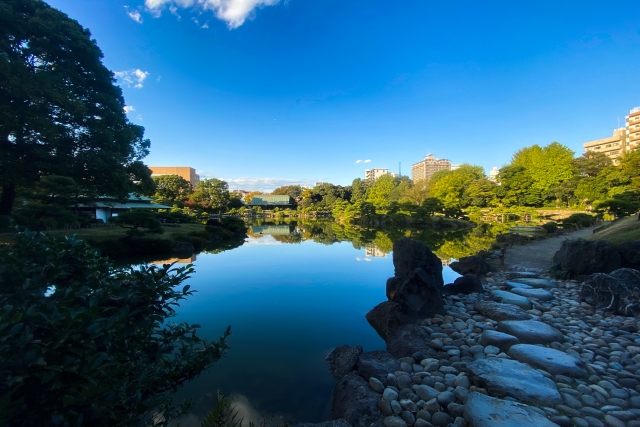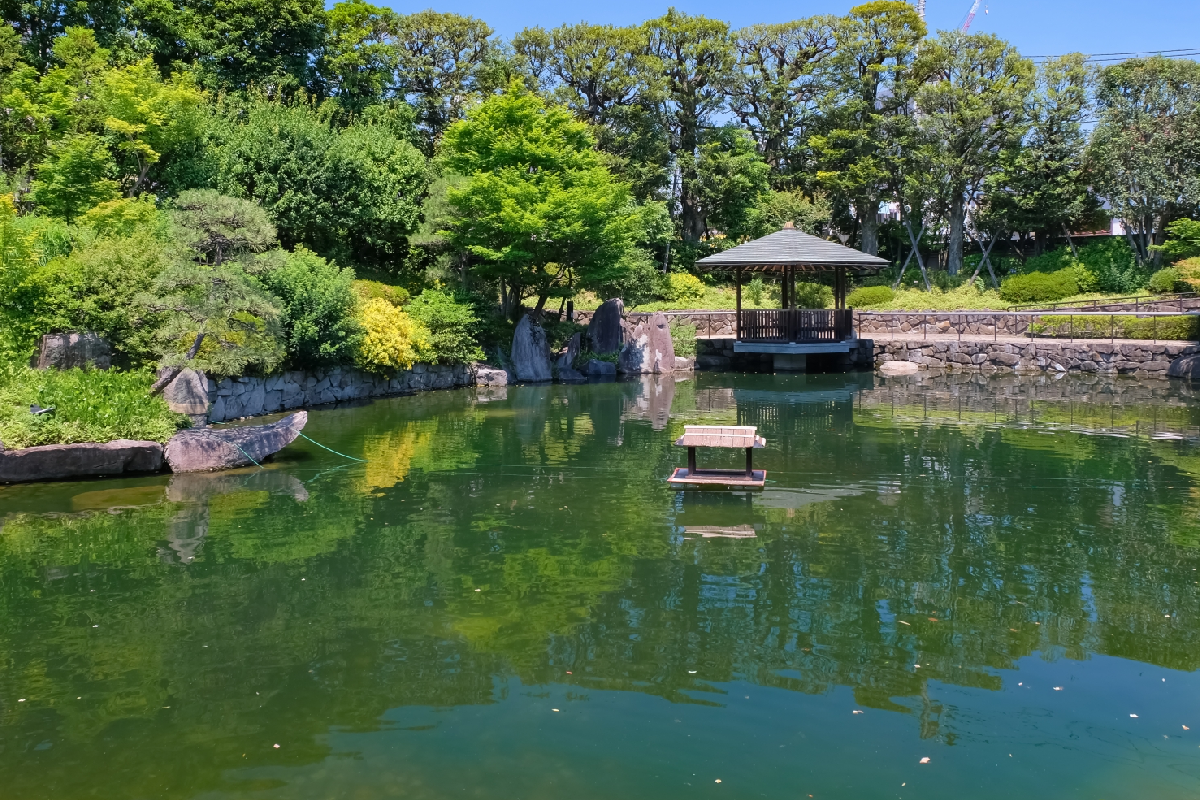- Introduction: True Tranquility Lies Down a Side Street
- Ken’s Selection: 5 Serene Japanese Gardens
- ① A Forest Spreading Behind a Museum【Nezu Museum Garden】
- ② Remnants of a Daimyo Residence【Former Furukawa Gardens (Kyū-Furukawa Gardens)】
- ③ Hexagonal Pavilion Floating on a Pond【Mejiro Garden】
- ④ A Place Loved by Literary Giants【Hotel Chinzanso Tokyo Garden】
- ⑤ A Masterpiece Garden Where “Stones” Are the Main Attraction【Kiyosumi Gardens】
Introduction: True Tranquility Lies Down a Side Street
Hello! This is Ken, editor-in-chief of Tokyo Insider Guide.
When you hear “Japanese garden,” many people probably imagine famous ones like Shinjuku Gyoen or Rikugien. They are indeed wonderful places. However, during autumn foliage or cherry blossom seasons, the sheer number of people can be overwhelming, making it difficult to truly experience “tranquility.”
“Beautiful. But is this hustle and bustle what you’re truly seeking?”
In fact, there are quiet and beautiful “hidden gem” gardens that most tourists overlook, even though they are very close to famous ones. In this article, I will guide you to Tokyo’s true oases.
Ken’s Selection: 5 Serene Japanese Gardens
I’ll introduce 5 of my favorite gardens that are easily accessible yet offer a quiet, peaceful time.
① A Forest Spreading Behind a Museum【Nezu Museum Garden】
Area: Omotesando
What kind of place?: It’s a city oasis with ponds and tea houses scattered throughout a vast, lush forest, hard to believe it’s in the heart of Omotesando, the forefront of fashion.
Hidden Gem Point: This garden is only accessible to visitors who have purchased an admission ticket to the Nezu Museum. Therefore, there are no tourists whose sole purpose is the garden, ensuring constant tranquility. While an admission fee is required to stroll through the garden (1,300 yen for adults), it’s well worth the value.
Access: Approximately 8 minutes walk from “Omotesando” Station on the Tokyo Metro.
② Remnants of a Daimyo Residence【Former Furukawa Gardens (Kyū-Furukawa Gardens)】
Area: Komagome
What kind of place?: Famous for its Western-style mansion and rose garden on a hill, but a full-fledged Japanese garden extends down the slope.
Hidden Gem Point: Many tourists are satisfied with the Western-style mansion and rose garden and leave, so the Japanese garden area is surprisingly uncrowded. The view from the stone bridge over Shinji Pond is exceptional, allowing you to leisurely watch the carp in the pond.
Access: 7 minutes walk from “Kami-Nakazato” Station on the JR Keihin-Tohoku Line, or 7 minutes walk from “Nishigahara” Station on the Tokyo Metro Namboku Line. Admission is 150 yen for adults.
③ Hexagonal Pavilion Floating on a Pond【Mejiro Garden】
Area: Mejiro
What kind of place?: A beautiful garden with traditional Japanese styles condensed into a compact space.
Hidden Gem Point: Located in a residential area a short walk from JR Mejiro Station, it’s a popular spot for locals to relax. The “Rokkakku Ukimi-do” (Hexagonal Floating Pavilion) built as if floating on the pond, and the murmuring of the waterfall soothe the soul. The autumn night illumination is particularly enchanting.
Access: 5 minutes walk from “Mejiro” Station on the JR Yamanote Line. Admission is free.
④ A Place Loved by Literary Giants【Hotel Chinzanso Tokyo Garden】
Area: Waseda
What kind of place?: A vast garden located within the grounds of the luxury hotel “Hotel Chinzanso Tokyo,” which can be freely explored even if you’re not a guest.
Hidden Gem Point: As a hotel garden, it is meticulously maintained, with plenty of highlights such as a three-storied pagoda, a waterfall, and the sacred Shirotama Inari Shrine. Since it’s not frequently visited by people other than hotel guests or restaurant users, you can stroll in tranquility that’s hard to find in the city center.
Access: 10 minutes walk from “Edogawabashi” Station on the Tokyo Metro Yurakucho Line.
⑤ A Masterpiece Garden Where “Stones” Are the Main Attraction【Kiyosumi Gardens】
Area: Kiyosumi-Shirakawa
What kind of place?: A representative “strolling garden with hills and a pond” of the Meiji era, created by collecting famous stones from all over Japan.
Hidden Gem Point: Since it’s located in an area slightly away from the city center, it has a calmer atmosphere compared to Shinjuku Gyoen and other famous gardens. The greatest feature of this garden is the “Iso-watari” (rock hopping path), which allows you to cross the pond by walking only on stones from one end to the other. You can have a unique experience as if walking on water.
Access: 3 minutes walk from “Kiyosumi-Shirakawa” Station on the Toei Oedo Line or Tokyo Metro Hanzomon Line. Admission is 150 yen for adults.

3 Perspectives to Enjoy Japanese Gardens 10 Times More
I’ll teach you “how to look” to appreciate the beauty of a garden more deeply, not just by walking around.
① Listen to the sounds: The sound of a shishi-odoshi (deer scarer) bamboo hitting a stone, the sound of carp splashing in the water, the rustling of trees in the wind… By experiencing the garden not only visually but also aurally, it reveals an even richer expression.
② Pay attention to the details: The mossy texture of a stone lantern, the sky reflected in a washbasin (chozubachi), the exquisite arrangement of stepping stones – the gardener’s aesthetic sense resides in these minute details.
③ Look for shakkei (borrowed scenery): This is a traditional Japanese technique of incorporating trees and buildings outside the garden as part of the garden’s scenery. It’s interesting to think, “This garden looks wider because of that forest over there,” for example.
Ken’s Final Advice
All the gardens introduced here are located very close to famous tourist spots. While many people walk down the main streets, just having the courage to turn into a small side street will reveal a completely different side of Tokyo. I hope you enjoy your exploration to find your own oasis of tranquility.




Comments